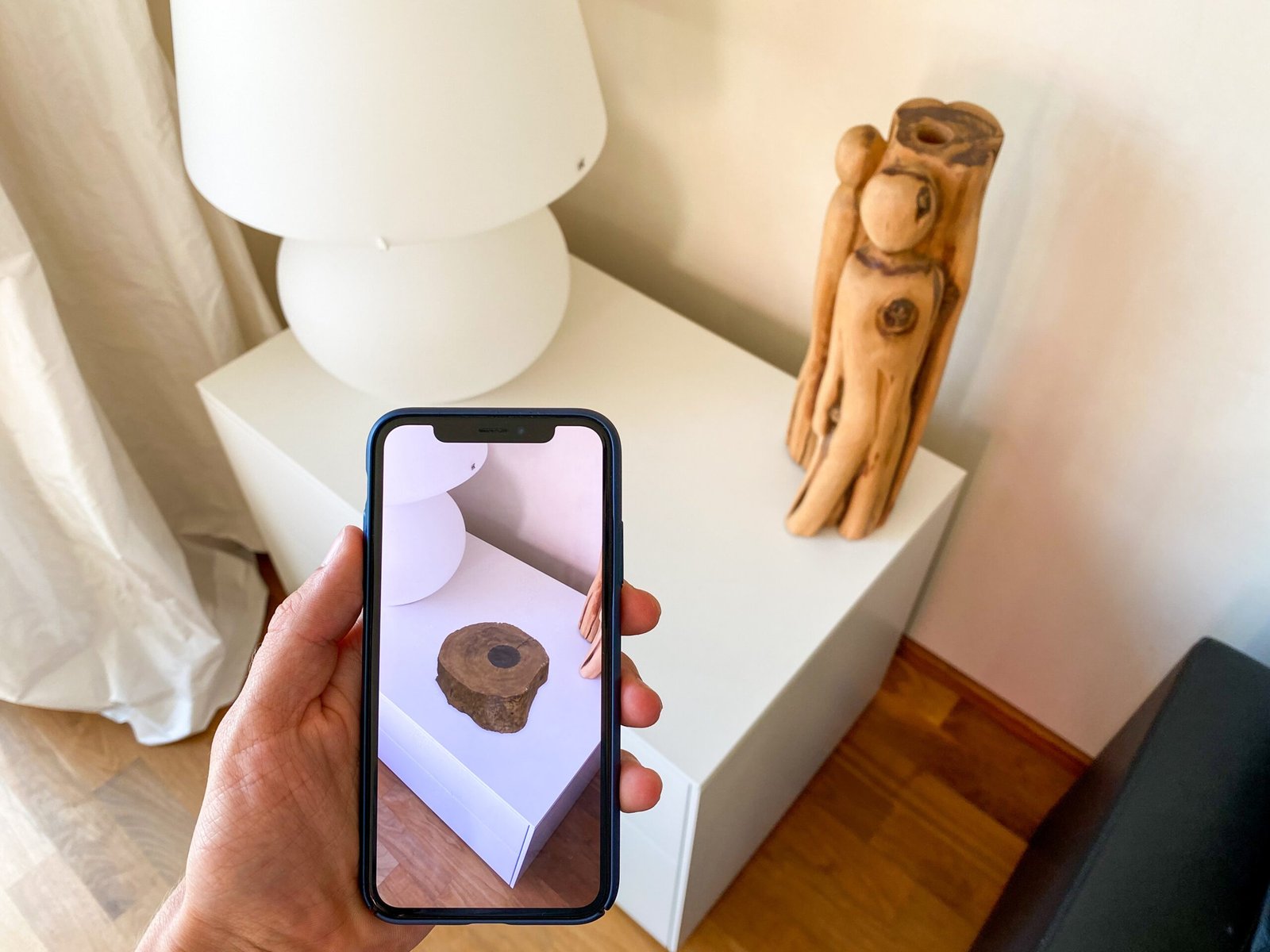Make It Stick Book Review: The Science-Backed Way to Learn Better and Remember Longer
Ever read a chapter, feel like you “got it,” and then forget almost everything on test day? You’re not alone. Most of us study by rereading, highlighting, and cramming—strategies that feel productive in the moment but don’t hold up when we need the knowledge most.
Make It Stick: The Science of Successful Learning is the antidote. Based on decades of cognitive psychology research, it explains why learning often feels harder than it should—and what to do instead. Better yet, it turns proven science into simple habits you can use right now, whether you’re a student, a teacher, or a lifelong learner who wants to remember what matters.
Here’s what makes this book so powerful: it challenges intuitive but ineffective study habits and replaces them with techniques that actually work—self-testing, spacing, interleaving, and purposeful difficulties that strengthen memory. If you’re tired of forgetting, this book can change how you learn for good.
Let’s dive in.
What “Make It Stick” Promises (and Delivers)
Written by Peter C. Brown, Henry L. Roediger III, and Mark A. McDaniel, Make It Stick blends accessible storytelling with rigorous research. Roediger and McDaniel are leading memory researchers; Brown is a writer who turns their findings into real-world advice. Together they translate lab-tested insights into practical strategies for classrooms, workplaces, and self-study.
Here’s the core idea: effective learning is not about comfort or familiarity. It’s about retrieving information, spacing practice, mixing up problems, explaining ideas in your own words, and getting timely feedback. These “desirable difficulties” make learning feel slower, but they build results that last.
For a quick sense of the evidence behind these ideas, see: – Test-enhanced learning research by Roediger & Karpicke (the “testing effect”) PubMed – The spacing effect meta-analysis by Cepeda et al. NIH – Interleaving research summarized by The Learning Scientists Learning Scientists – “Desirable difficulties” from the Bjork Learning & Forgetting Lab UCLA – Harvard University Press page for Make It Stick HUP
Why Your Favorite Study Habits Don’t Work as Well as You Think
The book devotes significant attention to “illusions of mastery”—the traps that make us feel like we’re learning when we’re not.
Common culprits: – Rereading and highlighting: These boost familiarity, not actual recall. You recognize the text, but you can’t explain it without looking. – Massed practice (cramming): You improve fast, then forget fast. Gains fade because you didn’t build durable retrieval routes. – Single-minded repetition: Practicing the same problem type over and over gives a false sense of fluency that doesn’t transfer to new problems.
Here’s why that matters: for knowledge to “stick,” your brain needs to practice pulling information out, not just pushing it in. Retrieval wires memory. Struggle—when well-designed—strengthens your long-term retention and flexible skills.
Key Ideas from “Make It Stick”: Science-Backed Learning Strategies
Retrieval Practice: Test to Learn, Not Just to Check
If you take one idea from the book, make it this: self-testing is a learning strategy, not just an assessment tool. Trying to recall information—without looking—cements memory far more effectively than rereading.
What it looks like: – Close the book and summarize the key ideas on a blank page. – Answer practice questions without notes. – Teach the concept to a friend in your own words.
Why it works: – Each successful retrieval strengthens the memory trace and builds cues you can use later. – Even failed attempts help when followed by the correct answer.
Evidence: The “testing effect” is robust across ages and subjects PubMed. Students who frequently self-test remember more and perform better long-term.
Quick tip: Convert headings and bolded terms in your textbook into questions. Then answer those questions from memory.
Spacing Effect: Don’t Cram—Space It Out
Spacing your study sessions across days or weeks helps knowledge stick. It feels harder because you’ve “forgotten” some details, but that mild forgetting makes the next retrieval stronger.
What it looks like: – Review material in short sessions over time (e.g., 4 x 30 minutes), not one long block. – Revisit topics just as you’re starting to forget.
Why it works: – Time between sessions forces retrieval. – You build resilience against forgetting because you’ve practiced recovering information.
Evidence: Decades of research show spaced practice beats massed practice for long-term retention NIH.
Quick tip: Use a spaced-repetition tool like Anki to schedule flashcards automatically Anki.
Interleaving: Mix It Up to Build Flexible Skills
Interleaving means alternating among different topics or problem types instead of blocking one type for a long time. It feels less fluid in the moment, but it improves your ability to choose the right strategy later.
What it looks like: – Mix algebra problem types in one session. – Rotate between writing, reading, and recall. – Practice varied shots in sports, not just one repeatedly.
Why it works: – You learn to spot patterns and select the right approach. – You reduce “context-dependent” learning that fails under new conditions.
Evidence: Interleaving improves long-term performance in math, music, sports, and more Learning Scientists.
Quick tip: After you learn the basics of a skill, switch to mixed sets rather than single-type drills.
Generation: Try First, Then Study
Generation is the act of trying to solve a problem before you’re shown the method. Even if you fail, the attempt primes your brain to learn from the solution.
What it looks like: – Predict an answer before reading the chapter. – Sketch a concept map before looking at notes. – Attempt a problem set cold, then review solutions.
Why it works: – You activate prior knowledge and curiosity. – Mistakes become powerful feedback.
Elaboration and Concrete Examples: Explain It in Your Own Words
Elaboration is connecting new information to what you already know. Concrete examples turn abstract ideas into memorable images.
What it looks like: – Ask and answer “How does this relate to…?” – Build analogies that make concepts vivid. – Pair formulas with real-world scenarios.
Why it works: – Richer memory traces, more retrieval cues. – Better transfer to new problems.
Helpful resource: The Learning Scientists’ “Six Strategies for Effective Learning” Learning Scientists.
Calibration: Fix Your Mental Dashboard
We’re often poor judges of what we know. Calibration is the practice of aligning your confidence with reality.
What it looks like: – Use low-stakes quizzes to test comprehension. – Check answers against criteria, not vibes. – Reflect after practice: What could you recall without notes?
Why it works: – You avoid illusions of fluency. – You target weak spots efficiently.
Consider reading about metacognition (thinking about your thinking) from the APA APA.
Desirable Difficulties: Embrace the Right Kind of Struggle
The book champions “desirable difficulties”—challenges that slow you down but increase learning: – Effortful retrieval – Varied practice – Spacing and interleaving – Generation before instruction
Caveat: The difficulty must be appropriate. Overwhelming struggle can backfire; the sweet spot is effortful but achievable. For more on this idea, see the Bjork Lab’s overview UCLA.
Myth-Busting: The Learning Styles Trap
One of the most persistent myths in education is that teaching should match a student’s preferred “learning style” (visual, auditory, etc.). Make It Stick dismantles this. Evidence shows tailoring to styles does not improve outcomes. What matters more are strategies that improve memory and transfer—like retrieval, spacing, and interleaving.
For a deep dive, see Pashler et al.’s review, “Learning Styles: Concepts and Evidence” Sage Journals and an accessible myth-busting piece from APA APA.
How to Apply “Make It Stick” Today: A Practical Playbook
Let me make this concrete. Here’s a step-by-step approach you can adapt to your life.
A Simple Weekly Learning Framework
1) Set retrieval goals – Define what you should be able to recall without notes by week’s end (key ideas, formulas, processes). – Turn each goal into 3–5 questions you can test yourself on.
2) Schedule spaced sessions – Break study into 3–5 short sessions across the week. – Use a calendar or spaced-repetition software to review at increasing intervals.
3) Mix your practice (interleave) – Rotate among topics or problem types in each session. – Keep each block short (15–25 minutes) and switch.
4) Generate first, then read – Take a few minutes to predict, outline, or attempt a problem. – Then read or watch the solution and correct your work.
5) Teach it, even briefly – Explain the topic to a friend or into a voice note. – No notes allowed. If you stumble, that’s a cue to review.
6) Calibrate with low-stakes quizzes – Use practice tests or build your own. – Track questions you miss and add them to your spaced reviews.
7) Reflect weekly – What stuck? What slipped? Adjust next week’s plan.
Tools to Make It Easy
- Spaced repetition: Anki Anki
- Retrieval prompts: Convert headings into questions; use blank-page summaries
- Interleaving: Shuffle problem sets; combine related topics in one session
- Feedback: Create answer keys; use rubrics; ask peers for quick checks
- Planning: Time-block short study sprints; set reminders
For Students
- Replace rereading with the “3R” loop: Read a small section, Recite from memory, Review the text and correct.
- After lectures, do a 5-minute brain dump of everything you recall. Then check against notes.
- Start exam prep earlier with 10–20 minute spaced sessions. Resist the cram-and-forget cycle.
For Professionals
- After reading an article, write a 150-word summary from memory and one actionable step.
- For new software or workflows, alternate “try first” with short guided tutorials.
- Build a “learning dashboard”: a shortlist of high-value skills with weekly retrieval checks.
For Educators and Trainers
- Put retrieval in the rhythm of class: quick no-stakes quizzes, cumulative review, “two-minute recall” at the end.
- Space key concepts across modules. Spiral back on purpose.
- Use interleaved assignments and test the ability to choose strategies, not just execute one.
- Provide effort-focused feedback: highlight progress and next steps.
A great resource for instructors: “The Science of Learning” from Deans for Impact Deans for Impact.
For Parents
- Turn review into a game: quick recall questions at dinner, teach-backs in car rides.
- Celebrate effort and strategies, not just grades.
- Encourage sleep, breaks, and spaced sessions—cramming plus exhaustion is a fast path to forgetting.
Common Objections—and Honest Answers
“Testing makes me anxious.”
Low-stakes retrieval reduces anxiety over time. Practice recall in private first, then in small groups. Treat each attempt as a rep, not a judgment.“I don’t have time for spaced practice.”
Spacing saves time. You’ll spend fewer hours relearning later. Start with 10-minute sessions, three times a week.“Interleaving just confuses me.”
That’s normal at first. Start by blocking to learn the basics, then interleave once you have a foothold. Confusion now means better transfer later.“Isn’t cramming sometimes necessary?”
Sometimes. But if you’ve spaced and retrieved steadily, pre-exam review becomes fine-tuning, not panic.
What I Loved—and Where the Book May Spark Debate
What the book nails: – It’s relentlessly practical: you can apply the strategies right away. – It explains why learning feels harder when it’s actually working. – It draws from high-quality research and real-world settings.
Where you might want nuance: – Beginners sometimes need worked examples before heavy interleaving. Start simple, then add difficulty. – Not every “difficulty” is desirable. Overload and ambiguity can hinder learning. Aim for effortful but achievable. – Motivation and context matter. Use goals, relevance, and small wins to sustain these habits.
Overall, the book’s core claims are well-supported. The strategies complement, rather than replace, good instruction and domain knowledge.
Who Should Read “Make It Stick”?
- Students who want their study time to pay off
- Educators seeking evidence-based teaching strategies
- Professionals learning complex skills under pressure
- Parents guiding kids through homework and tests
- Anyone who loves learning and hates forgetting
If you’ve ever highlighted an entire chapter and wondered why nothing stuck, this book is for you.
Memorable Evidence Without the Hype
- The testing effect: Repeated recall improves long-term retention more than repeated exposure PubMed.
- Spacing effect: Distributed practice reliably boosts memory across ages and content areas NIH.
- Interleaving: Mixed practice improves problem identification and strategy selection Learning Scientists.
- Desirable difficulties: Effortful learning conditions lead to more durable knowledge UCLA.
- Learning styles: Matching instruction to “styles” lacks evidence; focus on strategies that work for all learners APA.
Final Verdict: Does “Make It Stick” Live Up to the Hype?
Yes. It’s one of the most useful, clear-headed books on learning you can read. It doesn’t promise hacks or shortcuts. Instead, it gives you a toolkit aligned with how memory actually works. When you use it, learning becomes slower in the moment but much faster over time. You retain more, transfer better, and perform with confidence.
The subtle but powerful mindset shift is this: feeling fluent is not the goal. Being able to retrieve, explain, and apply is. Make It Stick shows you how to get there.
FAQs
Q: Is “Make It Stick” still relevant with today’s AI tools and digital learning?
A: Absolutely. Tools change, but memory principles don’t. In fact, retrieval practice, spacing, and interleaving pair perfectly with modern tools like flashcard apps, microlearning platforms, and AI tutors—just make sure you’re the one doing the recalling and explaining.
Q: What is the testing effect in simple terms?
A: You remember more when you practice recalling information than when you simply restudy it. Testing isn’t just for measuring—it’s for learning PubMed.
Q: How far apart should I space reviews?
A: As a rule of thumb, review just as you’re starting to forget. Many learners do day 1, day 3, day 7, then weekly. Spaced-repetition apps can optimize this schedule for you Anki.
Q: Does highlighting ever help?
A: Highlighting can be useful if it’s selective and followed by retrieval. The problem is passive highlighting without active recall. Highlight less; retrieve more.
Q: Is interleaving good for beginners?
A: Start with blocked practice to learn the basics. Once you’re somewhat comfortable, begin to interleave. The early confusion is a sign you’re learning to recognize patterns, not just repeat steps.
Q: How is “Make It Stick” different from other productivity books?
A: It’s not about motivation or habits alone; it’s about memory and learning mechanics. It gives you evidence-based techniques that change how you study and practice, not just how often.
Q: What other resources complement this book?
A: Try the Six Strategies for Effective Learning from The Learning Scientists Learning Scientists, the Bjork Lab’s work on desirable difficulties UCLA, and Deans for Impact’s “The Science of Learning” Deans for Impact.
Q: Where can I learn more or get the book?
A: See the Harvard University Press page for details and editions HUP.
The Bottom Line
If you want your effort to pay off, stop chasing the feeling of fluency. Instead, build learning that sticks: retrieve, space, interleave, generate, and calibrate. It will feel harder. That’s the point. And it’s how you’ll remember longer.
Action to take this week: – Turn one chapter of your current course or book into a 10-question self-quiz. – Space three short review sessions across the next seven days. – Mix problem types in your next practice set.
If this resonated, stick around for more evidence-based guides on learning and performance. Your future self—calm, prepared, and confident—will thank you.
Discover more at InnoVirtuoso.com
I would love some feedback on my writing so if you have any, please don’t hesitate to leave a comment around here or in any platforms that is convenient for you.
For more on tech and other topics, explore InnoVirtuoso.com anytime. Subscribe to my newsletter and join our growing community—we’ll create something magical together. I promise, it’ll never be boring!
Stay updated with the latest news—subscribe to our newsletter today!
Thank you all—wishing you an amazing day ahead!
Read more Literature Reviews at InnoVirtuoso
- Shadowbanned: The War on Truth and How to Escape It — Book Review, Insights, and the Digital Free Speech Survival Guide
- The Art and Science of Vibe Coding: How Kevin L Hauser’s Book Unlocks the Future of No-Code AI Software Creation
- Quantum Computing: Principles, Programming, and Possibilities – Why Anshuman Mishra’s Comprehensive Guide Is a Must-Read for Students and Researchers
- Book Review: How “Like” Became the Button That Changed the World – Insights from Martin Reeves & Bob Goodson
- Book Review: Age of Invisible Machines (2nd Edition) — How Robb Wilson & Josh Tyson’s Prophetic AI Playbook Prepares Leaders for 2027 and Beyond
- Almost Timeless: The 48 Foundation Principles of Generative AI – Why Mastering Principles Beats Chasing Hacks
- The AI Evolution: Why Every Business Leader Needs Jason Michael Perry’s Roadmap for the Future







